Sharing Family Stories on an Amazing Tour
This is a story about family stories.
Recently, our entire family visited the Big Island, my home island, where Steve and I vacationed last year. On this trip, I was trying to imprint on my grandchildren what it was like growing up in Hawaii. A far cry from our Mainland life.
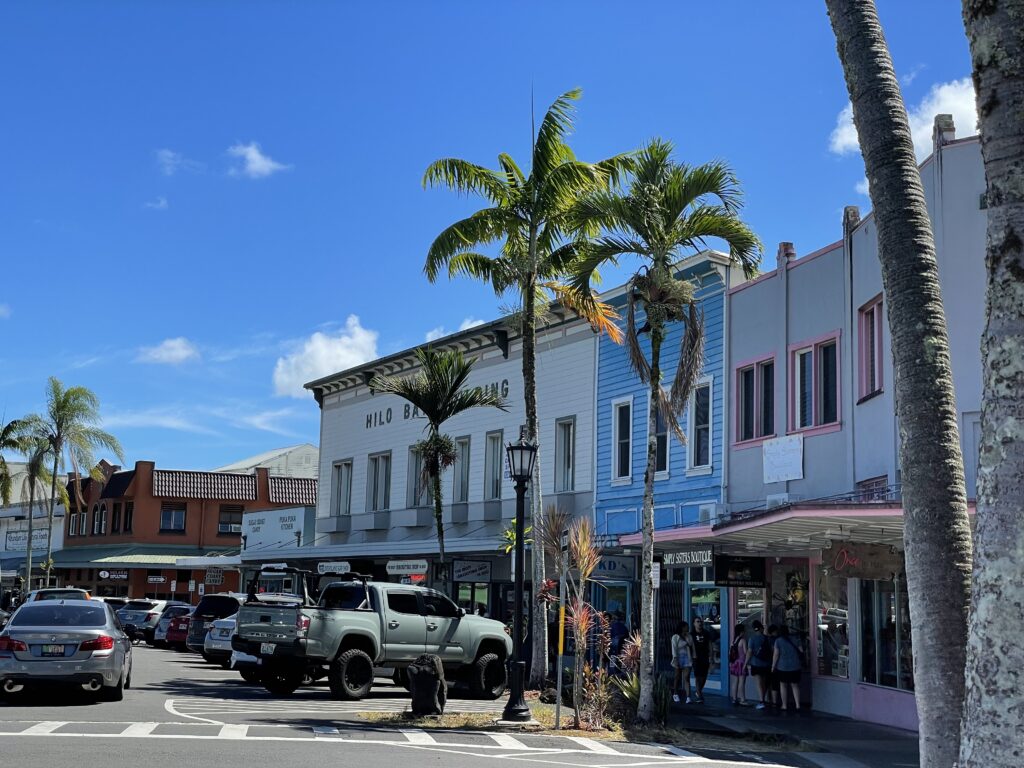
When you tell family stories, kids have a rich connection to the past. I still remember many of the stories my mom told me about her own life. And I have passed these stories on to my children.
Unless you share your stories, they’ll disappear from family lore and leave no traces of you behind.
Hawaii Volcanoes National Park
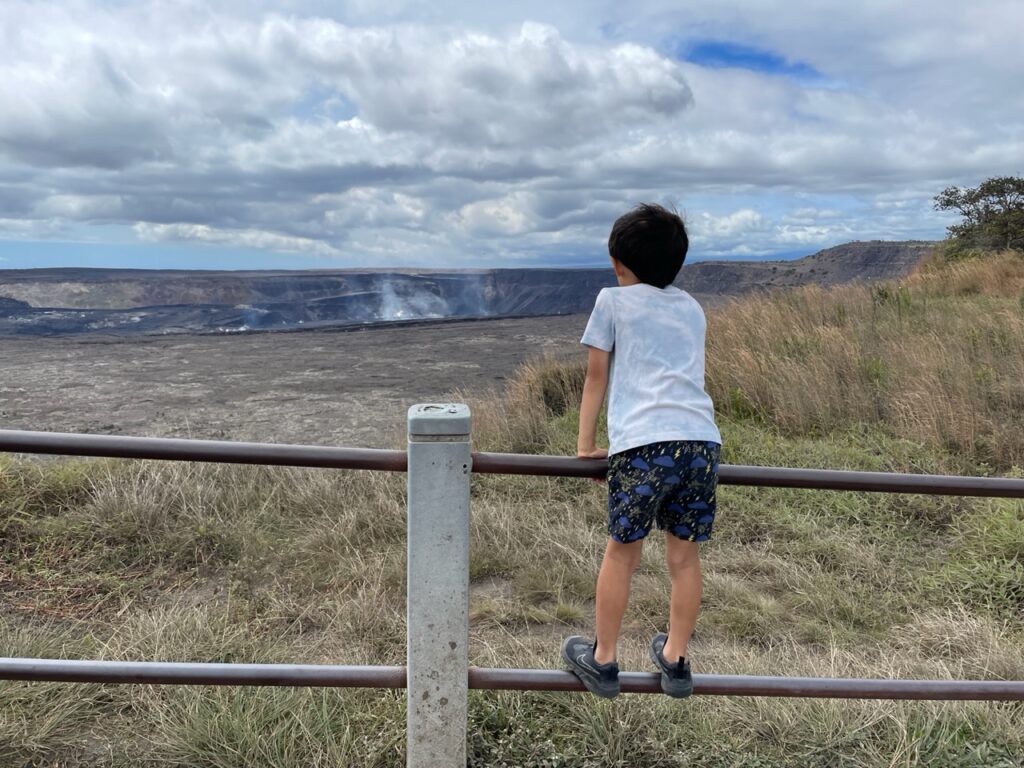
The Hawaii Volcanoes National Park is spectacular and must-see stop for any visitor to the Big Island. It houses two active volcanoes and is the home of Pele, the Hawaiian volcano deity.
My family story: My father was a member of the CCC (Civilian Conservation Corps) during the Great Depression. It was a lifeline for unemployed young men. He was one of the people who built trails and roads at the Hawaii Volcanoes National Park.
Kona Living History Farm
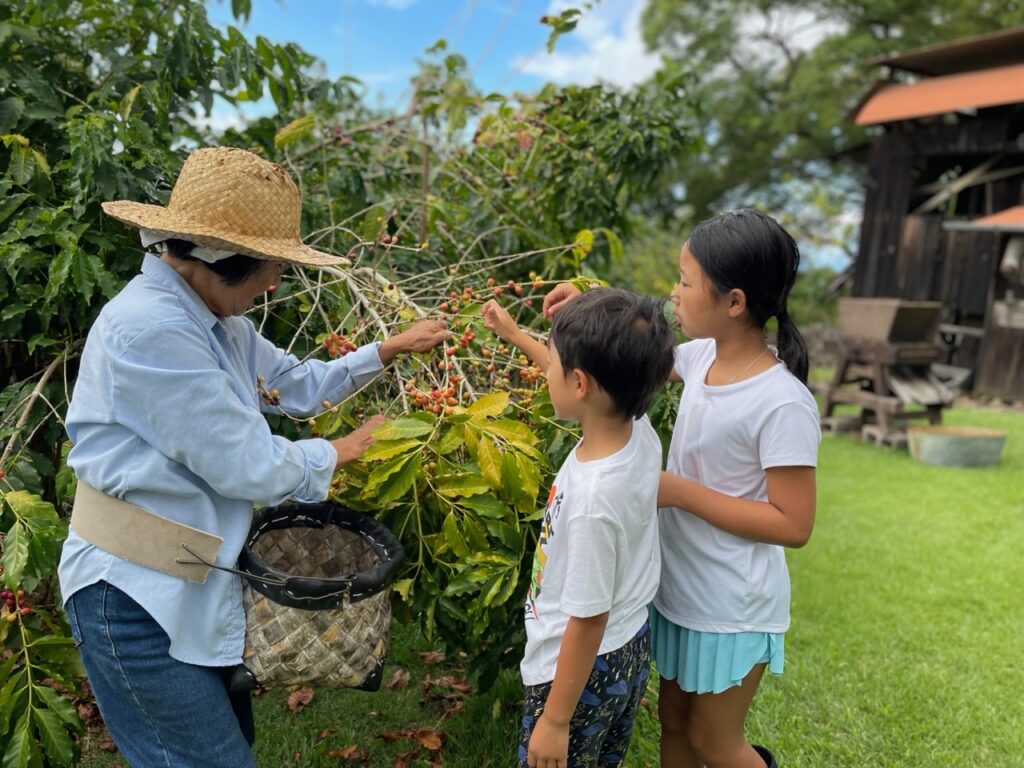
On the other side of the island, my mom grew up in a family of eight siblings on a coffee farm. The Japanese immigrants led a hardscrabble life, but they laid the foundation for today’s Kona Coffee industry.
The Kona Coffee Living History Farm was originally the home of one such immigrant family and is much like the home of my own grandparents.
At the farm, the grandkids fed the donkeys, picked some coffee, learned how the coffee was processed, and experienced farm life.
My family stories: When we were kids, my parents packed us up after my dad finished work on a Friday, and we drove to Kona during coffee season. We’d pick coffee on my uncle’s farm on Saturday and Sunday to earn extra money.
My sister and I would jointly have to pick enough coffee to fill a 100-pound burlap bag, to be excused for the rest of the day. (It shouldn’t have taken more than a half day but we dithered).
Our family coffee money bought us our first TV—a thrilling surprise for my sister and me during Easter vacation, when an appliance truck backed up into our driveway in Hilo.
The Beach
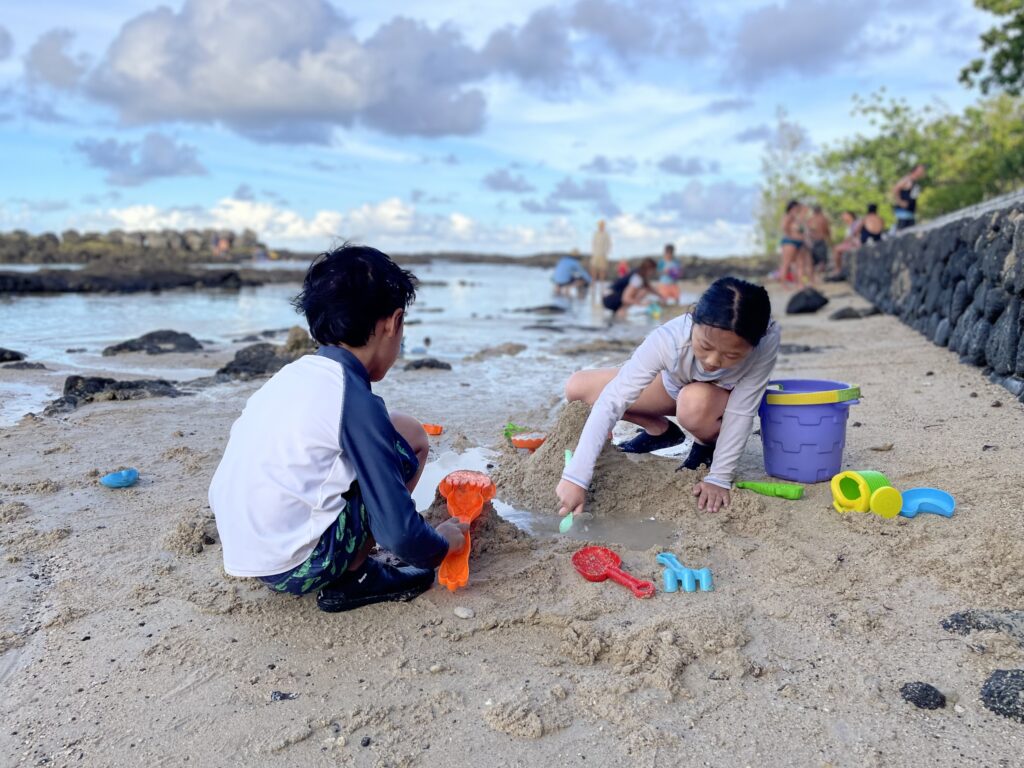
Probably, the beaches the kids will remember best will be those on the Kona side, where they went snorkeling and saw Honu (green sea turtles native to Hawaii). But for me, it was taking them to Onekahakaha Beach in Hilo, a lava rock and sand beach with a protective breakwater.
My family stories: Every summer, we attended a kumiai picnic, a neighborhood association gathering at Onekahakaha Beach. Unlike a block party, the “neighborhood” probably spanned a one-mile area.
There would be free, all-you-can-eat shave ice, grilled hot dogs, beer, and soda, all funded and staffed by the kumiai.
There were games for kids and adults—sack races, three-legged races, bingo, and more. Prizes included school supplies, candy, snack foods, and for the adults, food items like a gallon of soy sauce or bags of rice, which were premium rewards.
My dad, always jovial and fun-loving, would be encouraging my reluctant mom and others to play the games. My parents were an attractive young couple and my sister and I loved when they participated together.
We would bring our own bento lunch to the picnic and stay all day, enjoying leftovers for supper as the sun went down.
Favorite Foods
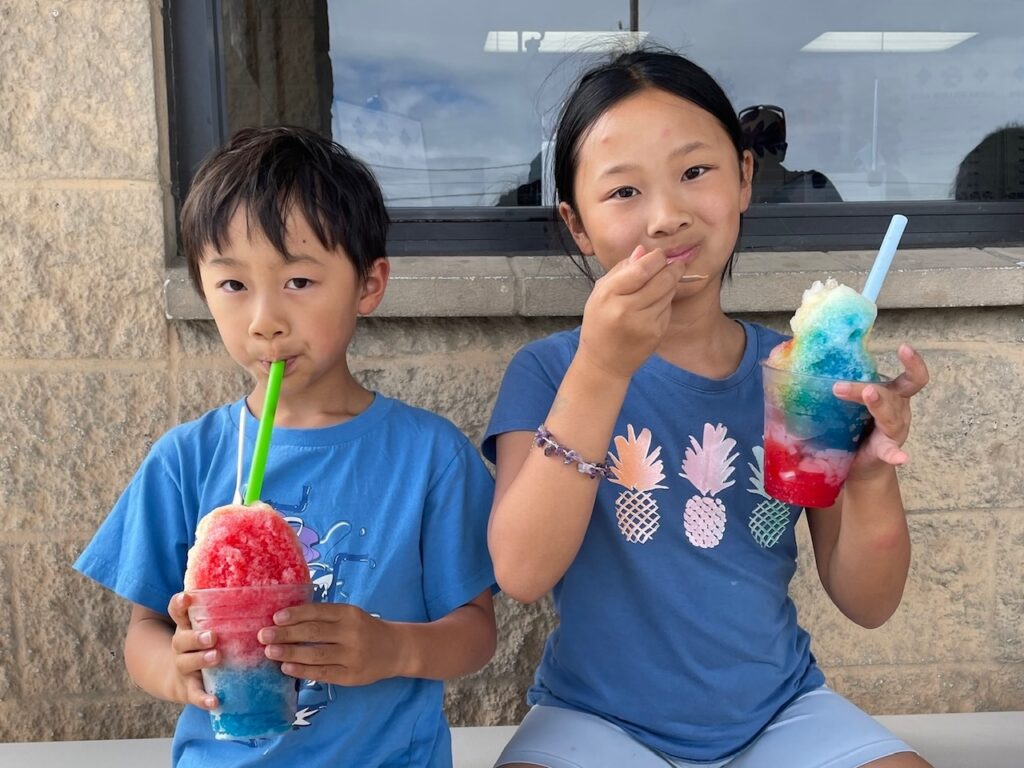
On a sweltering day in Hilo, nothing is more refreshing than ice shave (called shave ice everywhere else). The origins of shave ice, can be traced to Japanese immigrants from plantation days.
My family stories: Those of us who have moved to the Mainland miss certain foods we grew up with that are now available in some form or other where we live. But it’s not quite the same as enjoying them in Hawaii.
The grandkids aren’t adventurous eaters, but we did expose them to Portuguese sweet bread, laulau, loco moco, saimin, and more. Other dishes, such as Portuguese sausage and egg breakfasts, and spam musubi are foods we make at home on the Mainland.
Visiting Cemeteries
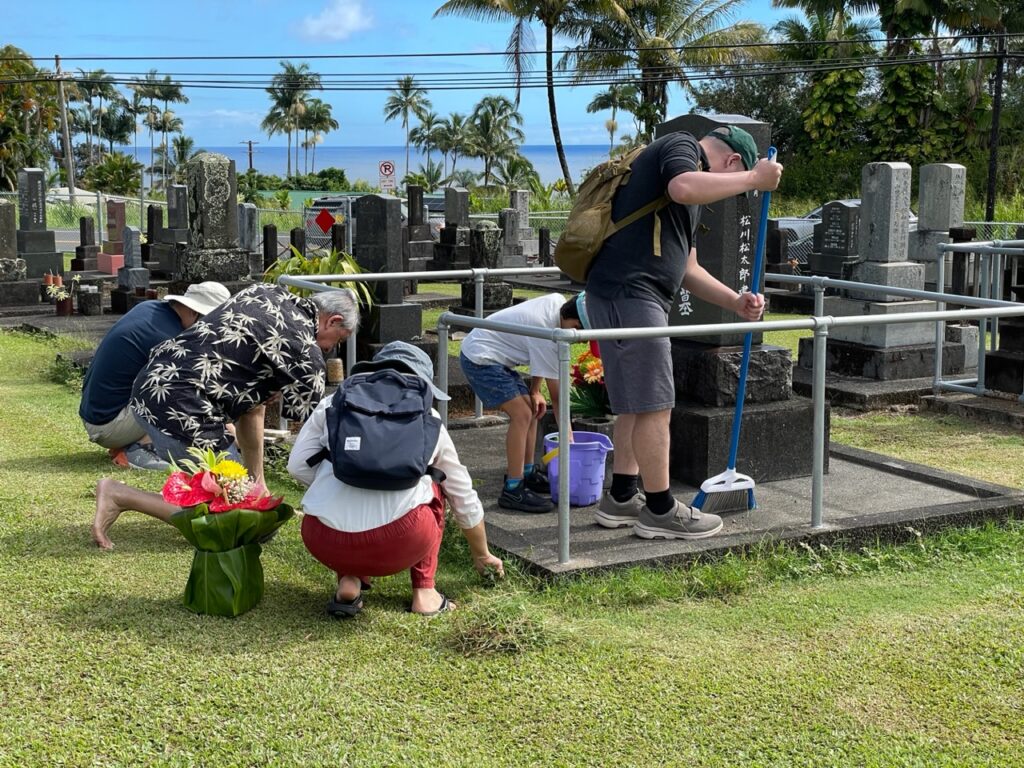
This one could be a downer for a child, but visiting the family cemetery is an opportunity for kids to learn about their ancestors. My parents, grandmother, and great-grandmother, along with some of my father’s siblings who died young, were cremated and are buried under one headstone. This seems to be tradition in Japan.
We go to the cemetery to clean the grave, put fresh flowers, and say a prayer.
My family stories: As children, we went to the cemetery often—probably weekly—to put flowers on the family grave and at the Veteran’s Cemetery where my uncle, who was killed in World War II, is buried.
Every Memorial Day, we attended a military service at the Veteran’s Cemetery in Hilo. The war was still fresh in the minds of the bereaved parents and grandparents. Many were Japanese immigrants who lost sons, fighting with the 100th Infantry Battalion/442 Regimental Combat Team, the most decorated unit in U.S. Military History.
What to do on a Family History Tour
Not everyone’s hometown is a tourist destination as mine is, but traveling home with your family can be a most wonderful way to bring your history to life for the grandchildren.
Visit:
- Your childhood home; tell the grandchildren stories about your neighborhood, the kids you played with, and what games you played
- Your schools (my elementary school, Hilo Union, was also my father’s school and it’s still operating)
- Favorite downtown shops
- Restaurants you used to frequent and favorite regional foods
- Favorite hangouts, such as the library or beaches or parks
- Family graves
Not every activity of interest to you might interest the grandkids—especially at seven and ten years old. Mine weren’t so taken by the Pacific Tsunami Museum, which has played a big part in the lives of people in Hilo.
Nor the Puʻuhonua o Hōnaunau National Historical Park, which is a sacred place and an important Hawaiian ceremonial site. It was hot and the kids were tired.
So, we do what we can. We expose them to places that are meaningful to us and we tell them our stories. Hopefully, some of it will stick.
In any case, a good time was had by all.
Sign Up!
Don’t forget to sign up for my email newsletter. Every Wednesday, I’ll give you a new idea for an activity or insight to nurture the little ones in your life.
These are great ideas and we are so glad that you did them with the grandkids. We have been and are doing the same. The pictures of Old Hilo remind one sadly of the old whaling village of Lahaina, now destroyed by fire. It will never be rebuilt the same. So we should cherish these old places like downtown Hilo where you can at least get a flavor of a 19th century Hawaii town. They won’t be there forever!
Thanks, Don! I know you all do this for your grandkids, too. So important to share stories.